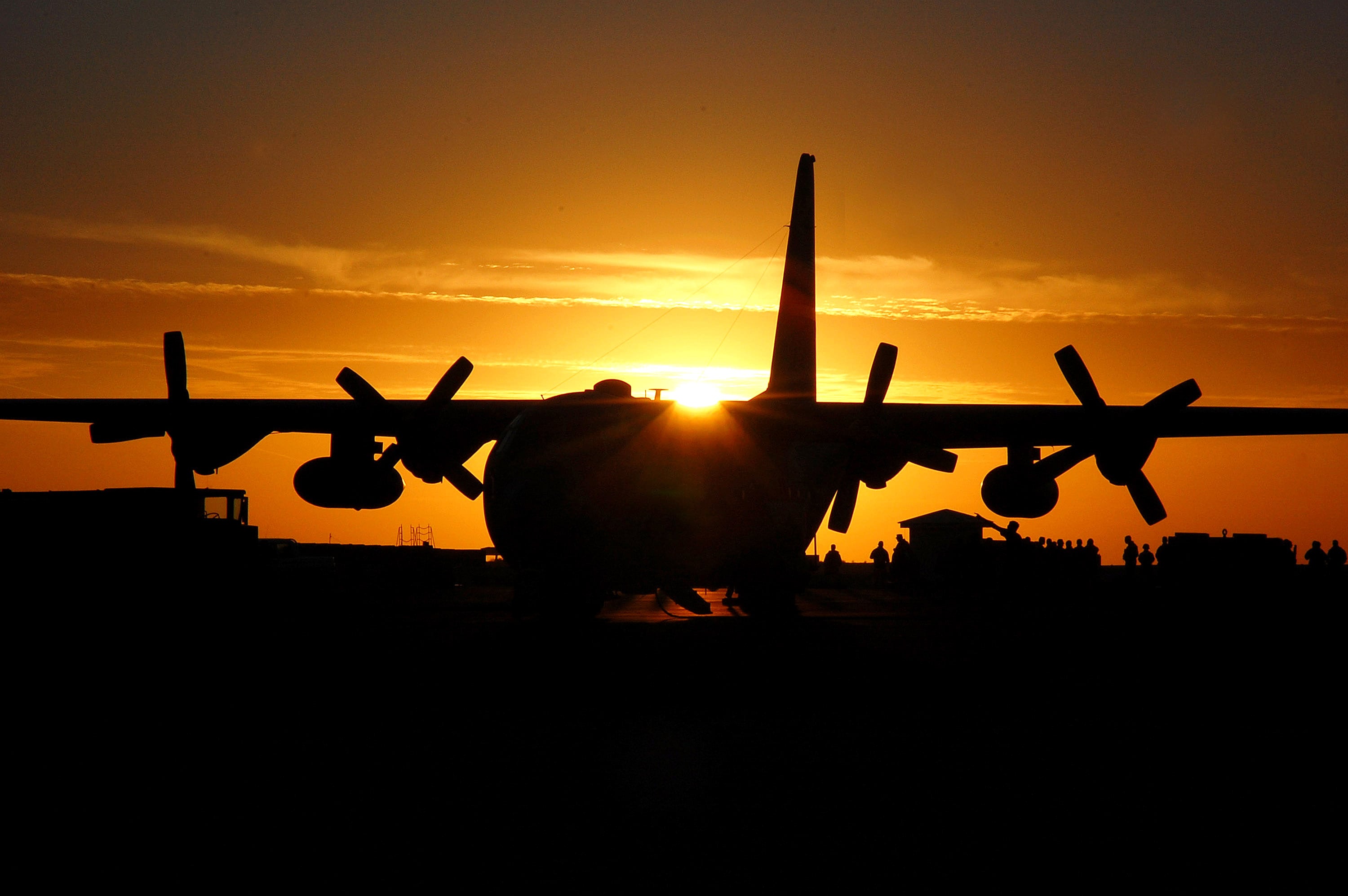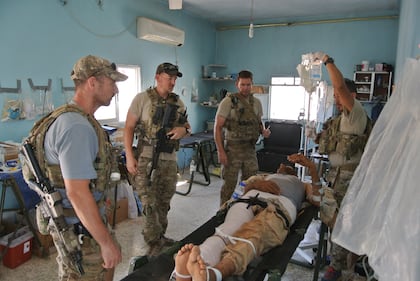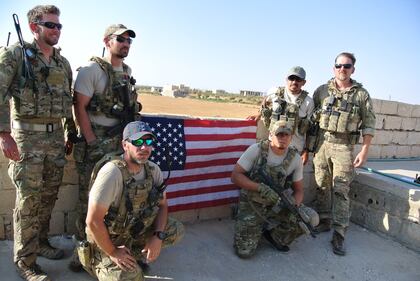On the front lines of the ISIS war, Air Force surgeons give blood, sweat and tears to save lives
For eight weeks last summer, the Special Operations Surgical Team from the 720th Operations Support Squadron deployed to help local fighters against the Islamic State saw “the worst of the horror that modern warfare brings,” as emergency medicine physician Lt. Col. Ben Mitchell said.
They endured nearly nonstop casualties requiring major surgery. They faced fallout from a chemical weapon attack. And confronted severe, heartbreaking war wounds to families and children.
Around the clock, through extreme fatigue, sweltering heat, and illness, they took it all on ― treating more than 750 patients and responding to 19 mass-casualty events. They improvised in impossible conditions, pioneered the use of complex medical procedures on the battlefield, and saved the lives of many civilians and local fighters who were battling ISIS.
On Aug. 4, the six members of the team from Hurlburt Field, Florida, were honored by Air Force Secretary Heather Wilson and Chief of Staff Gen. Dave Goldfein at a “Portraits in Courage” ceremony at the Air Force Memorial in Arlington, Virginia.
Portraits in Courage is an annual Air Force publication that salutes multiple airmen for a wide variety of heroic acts. The 2017 edition highlights 22 individual airmen or teams of airmen who displayed bravery in war, in their community, or in triumphing over adversity.
Members of the SOST also have also been submitted to receive Bronze Stars for their actions.
But even more valuable to them are the bonds that grew between one another ― and with the locals and fighters they treated and befriended.
Five members of the team spoke to Air Force Times Aug. 4 at the Pentagon.
Makeshift hospital
The airmen declined to say where they were deployed, what chemical weapons they treated, or even confirm if they were in Iraq or Syria. However, it has been reported that chemical weapons — including chlorine — were used in Aleppo, Syria, last summer.
The team ― Lt. Col. Matthew Uber, a nurse anesthetist; Maj. Justin Manley, a surgeon; emergency room nurses Maj. Nelson Pacheco and Capt. Cade Reedy; Technical Sgt. Richard Holguin, a respiratory therapist; and Mitchell ― traveled in a ground convoy through unsecure territory to an abandoned home that was already being used as a casualty collection point near the front line.
They set up a makeshift hospital there with the personal equipment they carried in their own backpacks ― some surgical equipment, monitors and medications, gloves, intubation equipment, ventilators, anesthesia, and other supplies ― as well as an intermittently-working generator necessary to keep blood refrigerated.
They had problems with dirty fuel and clogged fuel filters, so Uber worked hard to keep the generator running until the military eventually brought them a bigger, better generator. The local fighters also brought them a huge cooler and fresh ice every two days.
Image 0 of 4
Once the SOST demonstrated what they were capable of, and how dedicated they were to helping the locals fight ISIS, they quickly gained the fighters’ trust.
Uber recalled one fighter who came in, shot through the clavicle and out through his chest. The man had lost a tremendous amount of blood from his damaged subclavian artery. The other fighters offered their own blood for him, and the team cracked open the wounded fighter’s chest and began operating furiously, when a clot came off and the fighter began hemorrhaging.
They were all out of his blood type, and it looked like the fighter might die, when Reedy ― who had the necessary blood type ― held out his arm and offered his own. Reedy’s transfusion bought them time to stabilize the fighter and save his life. If they hadn’t been there with their skills, he would have surely died.
Two weeks later, Uber said, the fighter showed up at the front lines to see the SOST, “smiling ear to ear,” and had his picture taken with his “blood brother” Reedy.
‘They were there with us’
Often, they treated family members wounded fighting ISIS and didn’t even realize multiple patients were related.
“They saw us working, sweating, giving blood, whatever, and their family members were doing the fighting, and they were there with us,” Uber said. “And their appreciation, that the United States was bought into that fight, that we were there with them through thick and thin, … they saw total buy-in.”
After that, they said, anything they needed, the locals and the fighters would provide. More gloves, more anesthesia, more medicine, tea and food ― whatever was necessary, and they wouldn’t hear of being paid for it.
“They’ll give us anything they had on their back, and if we offered any type of monetary [compensation], they would get offended,” Pacheco said. “That’s how they were.”
Mitchell said it was an entirely different atmosphere from Afghanistan, where he and other team members felt wary due to instances of “green-on-blue” insider attacks.
“We felt completely safe and protected around our local fighters, I think because of that,” Mitchell said.
Austere conditions
The airmen settled into a steady ― and grueling ― battle rhythm. A full night’s sleep became a rare occurrence as they treated more than 100 patients a week ― usually about eight to ten patients a day, but sometimes 22 or 23 on the rough days.
Four or five nights a week, they would get woken up every hour or so by incoming patients. Or they would wake up to the sound of bombs and gunfire and wonder if they were about to get a fresh wave of patients.
With only six people, they were always working. For example, Holguin said, once Manley finished surgery, he’d grab a mop and start getting the place clean for the next casualty.
Sanitation was a constant challenge. Blood splattered everywhere during procedures, Reedy said, so after every patient, they wiped down the walls and floors with a bleach solution as best they could. They set up traps to catch flies and mice.
And between the heat, the conditions and the food, they all came down with illnesses at one time or another. At one point, Mitchell said, Manley almost passed out due to illness and the 100-plus degree temperatures.
Despite Manley’s protests, Mitchell talked him into taking fluids intravenously to rehydrate, so he could be ready for his next surgery 10 minutes later.
“Most of us lost at least 20 pounds during the deployment, in eight weeks,” Reedy said. “Justin would wear plastic surgical sleeves that come up past his elbow. He would literally raise them up [every five minutes] and all the sweat would pour out of the sleeves. It was that hot in there, it was that dehydrating. You’re not eating, either. It was a rough environment.”
On another day, the team had to put on body armor and ready their weapons while operating as mortars flew overhead, going off about 250 meters from the hospital.
RELATED

Emotional and physical toll
The deployment was taxing emotionally as well as physically, as the airmen saw the toll ISIS’ brutality took on children and families.
Sometimes, ISIS fighters would put a family in a vehicle and tell them they could leave the city, and then shoot at them so the family would drive at high speeds to the front lines, Mitchell said.
In some cases, that would lead the anti-ISIS fighters to shoot at the vehicles, wounding or killing the families. And it would be up to the SOST to try to save those innocent people’s lives.
As Mitchell described one particular day the team had to triage casualties — to separate the dead children and those who were dying, so they could concentrate on those who could be saved — he fell silent, overcome by emotion.
“It was just hard,” Mitchell said. “We had three mass casualty incidents that were predominantly pediatric. We just would sort through and do the best we could.”
In the middle of the chaos and triage, Mitchell said, an 8-year-old girl came in carrying her sibling ― probably a year and a half old ― and handed the baby to Mitchell. He put the baby on a stretcher, examined the child, and could tell right away the baby was dead.
He never saw the girl again.
But immediately afterwards, the girl’s 12-year-old brother came in with a gunshot wound in the chest and was put on the same stretcher. Mitchell began treating him by inserting a chest tube, giving him pain medications, and starting a blood transfusion. The whole time, that child’s dead sibling laid between his legs on the stretcher.
“I don’t even know that [the 12-year-old] knew that that child was there,” Uber said. “It was just that kind of an event. And there were multiple events [like that].”
That day, Pacheco said, after the surgery was over, the locals told them all to leave so they could clean up after them.
It was especially hard for parents like Pacheco, Reedy and Uber. Pacheco said he couldn’t help but think of his own daughter at those times.
“When you see kids stacked in the back of a pickup, like baggage, and you’re saying this one’s alive and this one’s not alive, that sticks with you,” Uber said. “Sometimes, it was a blessing to be in the OR, because you had one patient.”
Sometimes, “it sounded like a horror show going on” in the other room, he said.
‘The most rewarding’
But as trying as those days were, the bonds the team built with each other and the locals helped them get through the trauma and save lives.
The team made medical history by being the first to perform a complex procedure called a REBOA ― Resuscitative Endovascular Balloon Occlusion of the Aorta ― in a forward wartime environment.
In this procedure ― which Manley had just been trained in before the deployment ― a balloon catheter is inserted into a critically injured patent through his femoral artery, passed up to his aorta, and then inflated to stop severe bleeding and buy more time to save his life on the operating table. The team saved four people’s lives that way, and the technique is now being used by other surgical teams at war.
Members of the SOST remember the people they were able to save, who would have been dead otherwise. Reedy said one 20-year-old woman who was shot through the abdomen was writhing on the stretcher and gushed so much blood that “it looked like you turned on a spigot.” But after treating her and getting her to a local hospital, she survived and walked out a few days later.
And they fondly recall laughing with the locals, watching them do their dances, and even smoking hookah with them on occasion.
“When I look back, it’s the hardest thing I’ve done in my life, but the most rewarding,” Holguin said. “As grim as it was, weeks of horror, but in the midst of all that stuff, we managed to have good times. And it was small stuff. To be able to have that time, to be able to bond. This is what I’m going to remember from the Air Force.”
Stephen Losey is the air warfare reporter for Defense News. He previously covered leadership and personnel issues at Air Force Times, and the Pentagon, special operations and air warfare at Military.com. He has traveled to the Middle East to cover U.S. Air Force operations.









